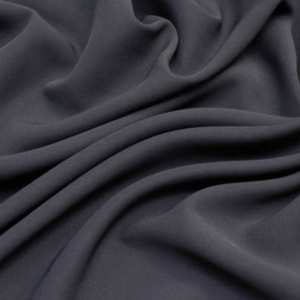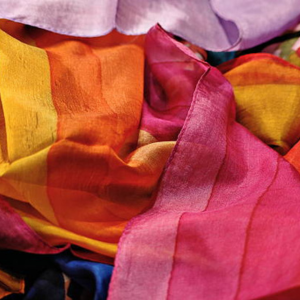Bamboo rayon is a popular textile known for its softness, breathability, and eco-friendliness. Made from rayon derived from bamboo, this fabric is increasingly sought after in various industries, particularly in clothing and home textiles.
In this article, we will explore what bamboo rayon is, how it is produced, its advantages and disadvantages, and its applications in different industries.
What is bamboo rayon: Understanding Bamboo Rayon
To define bamboo rayon, we first need to look at the process through which it is created. Bamboo is a fast-growing grass that can reach maturity in just a few years, making it a sustainable raw material.
However, bamboo itself is not suitable for fabric without processing. The process begins with harvesting bamboo stalks, which are then broken down into pulp.
From the pulp, rayon from bamboo fiber is produced through a chemical process that involves dissolving the cellulose in the bamboo and then regenerating it into fibers. These fibers are then spun into yarn and woven into fabric.
This makes rayon made from bamboo fibers a type of rayon, which is a semi-synthetic material derived from natural sources.

The Production Process of Bamboo Rayon
The production of rayon from bamboo involves several key steps:
- Harvesting Bamboo: The bamboo plants are harvested when they reach the desired height and maturity, typically between 3 to 5 years of growth.
- Breaking Down the Stalks: The harvested bamboo is then chopped into small pieces, which are treated to break down the cellulose structure.
- Chemical Processing: The chopped bamboo is treated with chemicals, usually sodium hydroxide, to dissolve the cellulose and convert it into a viscous solution. This solution is then forced through spinnerets to form fibers.
- Washing and Drying: After the fibers are formed, they are washed to remove any remaining chemicals and then dried to produce the final product, which is rayon from bamboo fabric.
- Finishing: The fabric may undergo additional finishing processes to enhance its texture and performance.
Bamboo Rayon vs Bamboo Viscose
One common point of confusion in the textile world is the distinction between bamboo rayon and bamboo viscose. Most of the time, the debate is also about bamboo vs polyester, people need to understand the difference between both of them. While both are derived from bamboo and share similar properties, they are technically different.
- Bamboo Rayon: Refers specifically to the fabric produced using the rayon production process from bamboo. It is a type of rayon that is derived from bamboo pulp.
- Bamboo Viscose: Often used interchangeably with bamboo rayon, but strictly speaking, viscose refers to the process used to create the fibers. Thus, while all bamboo viscose is bamboo rayon, not all rayon from bamboo is produced in the same way. Viscose is just one method of producing rayon, and there are other methods that may not yield the same characteristics.
Benefits of Bamboo Rayon Fabric
Bamboo rayon is favored for various reasons, including:
- Softness: One of the most notable attributes of bamboo rayon is its softness. The fabric feels smooth against the skin, making it comfortable for clothing, particularly sleepwear and undergarments.
- Breathability: Bamboo rayon is highly breathable, allowing air to circulate and keeping the wearer cool. This makes it an ideal choice for hot weather or for those who tend to sweat during the night.
- Moisture-Wicking: The fabric has natural moisture-wicking properties, meaning it can absorb moisture and help keep the body dry. This is particularly beneficial for active wear or sleepwear.
- Antimicrobial Properties: Bamboo has natural antibacterial properties, which can help reduce odors and keep the fabric fresher for longer. This makes bamboo rayon a popular choice for athletic wear and bedding.
- Eco-Friendliness: Bamboo is a renewable resource that grows quickly and requires little water. Although the production of bamboo rayon involves chemicals, many manufacturers are adopting more sustainable practices to reduce the environmental impact.
Drawbacks of Bamboo Rayon Fabric
While there are many benefits to using rayon derived from bamboo, there are also some drawbacks to consider:
- Chemical Processing: The production process for bamboo rayon involves chemicals that can be harmful if not managed properly. This can raise concerns about the environmental impact of the manufacturing process.
- Durability: Bamboo rayon may not be as durable as other fabrics like cotton or polyester. It can wear down over time and may be prone to shrinking or stretching if not cared for properly.
- Care Requirements: Bamboo rayon fabrics often require special care when washing. They can be more susceptible to damage from heat, so they should typically be washed in cold water and air-dried.
Applications of Bamboo Rayon in Industry
Bamboo rayon has a variety of applications across different industries, primarily due to its desirable qualities. Here are some common uses:
Clothing
Bamboo rayon is widely used in the clothing industry for making T-shirts, dresses, sleepwear, and bamboo matching family pajamas. The fabric’s softness and breathability make it ideal for close-to-skin wear.
Home Textiles
Bamboo rayon is popular for home textiles such as bed sheets, pillowcases, and towels. Its moisture-wicking and antimicrobial properties make it a great choice for bedding, providing a comfortable and fresh sleep environment.
Activewear
Due to its breathability and moisture-wicking abilities, bamboo rayon is increasingly being used in athletic wear. It allows for freedom of movement while helping to regulate body temperature during exercise.
Eco-Friendly Products
Many eco-conscious brands are using bamboo rayon to create sustainable products. From reusable bags to biodegradable packaging, the versatility of bamboo rayon lends itself to various environmentally friendly applications.
Baby Products
Bamboo rayon is also becoming popular in baby clothing and accessories. Its softness and hypoallergenic properties make it a safe choice for sensitive baby skin, and its moisture-wicking abilities help keep infants comfortable.
Sustainability Considerations
While bamboo itself is a sustainable resource, the process of creating rayon made from bamboo fibers raises questions about environmental impact.
Many manufacturers are moving towards more sustainable practices, including using closed-loop systems that recycle chemicals, thus minimizing waste.
Consumers need to choose products from reputable brands that prioritize sustainable practices in their production methods.
Conclusion
Bamboo rayon is a versatile and eco-friendly fabric derived from the cellulose of bamboo plants. Known for its softness, breathability, and moisture-wicking properties, this fabric is increasingly used in various industries, particularly in clothing and home textiles.
While there are some concerns regarding the chemical processes involved in its production, many manufacturers are adopting more sustainable practices to mitigate these effects.
Understanding what is bamboo rayon and its applications can help consumers make informed choices about their clothing and home textiles, supporting both comfort and sustainability. As the demand for eco-friendly fabrics grows, rayon from bamboo fiber is poised to play an essential role in the future of the textile industry.
